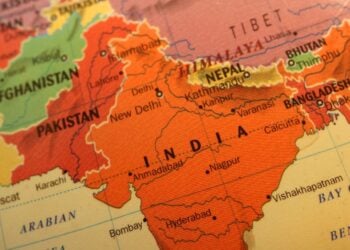American whiskey-makers have been on a wild ride. From proliferation, to regulation, to prohibition, to decriminalization and then back to proliferation, U.S. spirits have been regulated in varying manners. Since the country’s founding, American whiskey distilleries have faced legal difficulties. Today, with the resurgence of American whiskey, certain legal challenges are increasing.
Following the Revolutionary War, the newly formed Congress tried to use whiskey to solve a debt problem. Federal and state governments had collectively borrowed nearly $80 million to fund the war. To pay for it, the federal government placed an excise tax (the Whiskey Tax of 1791) on distilled spirits.
Frontier Americans were displeased. West of the Appalachian Mountains where cash was scarce, farmers frequently distilled and sold whiskey, which was commonly used as a substitute for cash. The Whiskey Tax effectively became an income tax on poor Westerners.
Rural Western Pennsylvanians were particularly incensed, leading to the tar and feathering of Philadelphian tax collectors. Protests continued until 1794, when George Washington personally led a federal militia of 13,000 people into Western Pennsylvania to quell the uprising.
For the next two centuries, the United States passed multiple laws protecting, regulating, criminalizing, and then de-criminalizing whiskey. An early regulation, the Bottled-In-Bond Act of 1897, permitted distillers who met certain manufacturing quality requirements to place a certification mark on their bottles, helping consumers distinguish exceptional whiskeys from rotgut. In 1909, the Pure Food and Drug Act of 1906 was amended to legally de-fine “straight whiskey” and “blended whiskey,” requiring accurate labeling.
Concerns over whiskey quality evaporated in the 1910s with the rise of the temperance movement and Prohibition. In 1919, Congress passed the 18th Amendment, outlawing the sale of alcohol for beverage purposes and inadvertently giving rise to illegal production and sales of alcohol. After 13 long years of Prohibition, only six legal distilleries remained.
Following Prohibition, American whiskey was predominantly consumed from local distilleries. Today, whiskey consumption is not just national, but massively global. And with the American whiskey boom, which was responsible for creating many new distilleries and a profusion of American whiskeys, describing American whiskey can be problematic.
Old-world, geographically defined spirits such as Scotch and Irish whiskeys are not just globally recognized styles; they are also legally protected. Many non-U.S. countries recognize and protect geographically-sourced products as “geographical indications,” and prohibit non-local producers from adopting those terms. However, while the U.S. Alcohol and Tobacco Tax and Trade Bureau (T.T.B.) recognizes “bourbon” as an American-only spirit, other countries do not recognize bourbon as a geographical indication. As such, it is perfectly fine to sell an Australian bourbon in France, but not an Australian cognac or scotch.
Further challenges arise for American distillers, as the United States also recognizes many foreign geographical indications such as Scotch, Irish and Canadian whiskeys. U.S. distillers are prohibited from labeling their products with these indications, even if they are manufactured in the exact same style. How does an American distiller describe its single-malt whiskey without calling it “scotch?” Even with American whiskey distillers often using the term “single malt,” the T.T.B. has yet to offer a definition for such term. Thus, consumers often will not immediately perceive the style and resulting flavor of some American whiskeys. With today’s broad selection of spirits, distinguishing products from one another can be extremely challenging.
One solution for U.S. distillers is to invest in strong branding. Leveraging strong trademarks and distinctive trade dress allows consumers to recognize and remember a product. Although other countries may leverage geographical indications in protecting their spirits, American distilleries can use creative trademarks and distinctive trade dress to distinguish whiskeys from international competitors. Similarly, trademarks help American whiskeys stand apart from one another in the United States.
Not everyone may be able to identify a whiskey by taste, but consumers will often recognize the shape of a bottle, a unique name, stylized font or creative logo. While one cannot acquire trademark protection for the taste of a certain American whiskey, it is available for many elements such as packaging, labeling, and bottle features. Also, international recognition and enforcement of trademark law is generally consistent among commercially developed countries. Older American distilleries have effectively used trademarks to both protect and promote their long-standing whiskeys; new distilleries need to do so as well to compete in the national and international marketplaces. Ryan Levy









